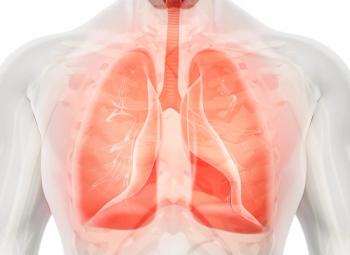
Review Finds No Association Between Higher BMI and Decreased Kidney Function Following Partial Nephrectomy for Kidney Cancer
According to a retrospective chart review, there was no significant correlation between BMI and changes in renal function among patients who underwent partial nephrectomy for the treatment of kidney cancer.
Obesity was not associated with decreased renal function after partial nephrectomy in patients with kidney cancer, according to a retrospective chart review presented at the 2022 Society of Urologic Oncology Annual Meeting.
“What's important to understand about BMI and long-term renal function is it has been postulated by some colleagues that as BMI icreases there is a decrease in renal function,” Lachlan Shiver, a medical student at the University of South Florida College of Medicine working under the supervision of Dr. Heather Huelster and Dr. Philippe Spiess at the Moffitt Cancer Center, said in an interview with CancerNetwork® about the findings.
“So, as BMI increases, you see an increase in the rate of chronic kidney disease. What our study was able to demonstrate is that when you do partial nephrectomy for renal masses, we observe that people with greater BMI in terms of renal function from a 0-month to 36-month post [partial nephrectomy setting], don't really demonstrate a decrease in renal function that you'd expect, based on the increases in BMI.”
Partial nephrectomy is the standard of care in patients with renal masses less than 4 cm. However, obesity can be associated with chronic kidney disease and renal cell carcinoma. Therefore, the researchers aimed to evaluate the long-term renal outcome after partial nephrectomy and whether there was an association with BMI in predicting the patterns of renal function maintenance or deterioration.
The retrospective chart review included 1274 patients who underwent partial nephrectomy from 2009 to 2020 at Moffitt Cancer Center. In particular, they focused on the percentage of change in glomerular filtration rate (GFR) values at 1 to 3 months, 6 months, 9 to 12 months, 24 months, and 36 months after partial nephrectomy.
Body mass index (BMI) was stratified into 4 subgroups: <25 (normal; n = 172 [15%’), 25 to <30 (overweight; n = 384 [32%]), 30 to <40 (class I to II obesity; n = 488 [42%]), and >40. (class III obesity; n = 114 [11%]).
At 1 to 3 months, mean GFR declined -9.63% (P = .263), followed by -9.25% at 6 months (P = .087), -8.11% at 9 to 12 months (P = .019), -9.50% at 24 months (P = .275), and -7.96% at 36 months (P = .028). As a result, the researchers found no significant correlation between BMI subgroups and change from baseline GFR.
In addition, the researchers found that increasing BMI in the normal, overweight, class I to II obesity, and class III obesity subgroups was associated with higher rates of malignant pathology (P < .001) and an increase in median estimated blood loss (median, 100 ml vs 100 ml vs 150 ml vs and 200 ml, respectively; P < .001). However, they found no difference in median hospital stay length (4 vs 3.5 vs 4 vs 4 days, respectively; P = .610)) or 30-day rates of intervention or readmission to the hospital (19% vs 40% vs 51% vs 10%; P = .936).
“[What] we noted from this study is that BMI is not an accurate predictor of renal function maintenance or deteroriation following partial nephrectomy which ultimately revolves in this clinical setting based on pre-operative renal function and anticipated amount of renal parenchyma that will need to be resected,” Spiess, a senior author on the study and assistant chief of surgical services at Moffitt, said.
As a next step, he added, the researchers hope to evaluate BMI’s effect on recurrence rates. “Right now we're looking not only at BMI and long-term renal function, we're also looking at BMI and recurrence rates. So the preliminary findings from that are it looks like BMI may not be associated with a greater risk of recurrence,” Shiver concluded. “Which is interesting because BMI is associated with a higher incidence rate of renal cancer, but it doesn't look like [it is associated with] recurrence.”
Reference:
Shiver L, Khan F, Wang C, et al. Measuring Outcomes in Partial Nephrectomies: The Impact of BMI on Long-Term Kidney Function. Presented at: Society of Urologic Oncology 23rd Annual Meeting; November 30-December 2, 2022; San Diego, California. Poster 200.
Newsletter
Stay up to date on recent advances in the multidisciplinary approach to cancer.



















































































